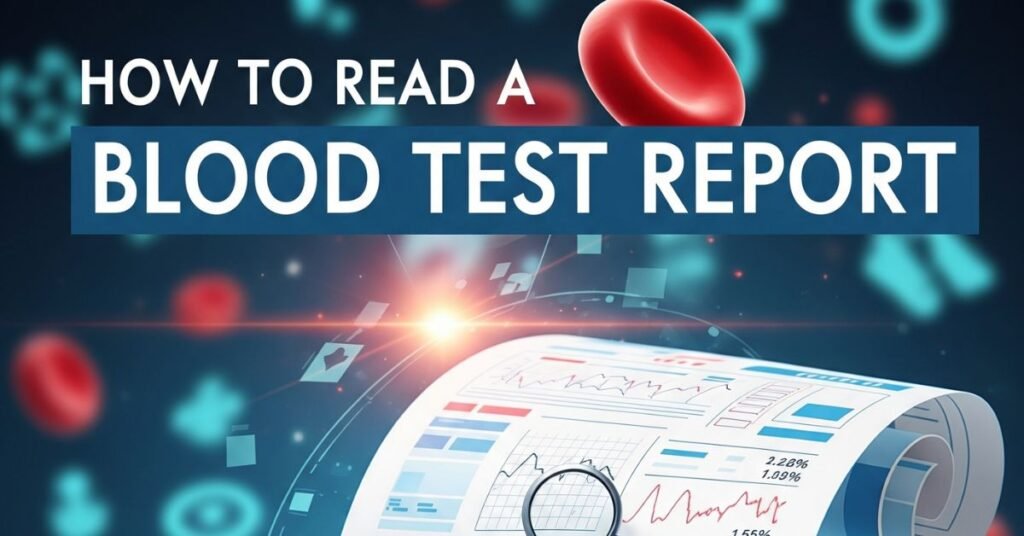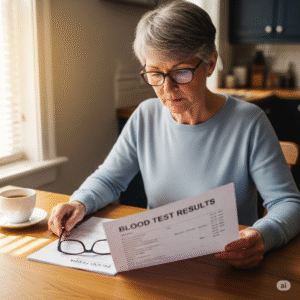How to Read a Blood Test: A Simple Guide for Beginners

Learning how to read a blood test for the first time can feel like trying to decipher a secret code. That moment when you get the notification—your lab results are in. I remember feeling a mix of anxiety and confusion, holding a report filled with acronyms and numbers that looked like a different language. If you’ve ever felt overwhelmed by a blood test report, you are not alone. It’s a common frustration for many of us trying to be proactive about our health. The good news is, you don’t need a medical degree to grasp the basics.
Table of Contents
ToggleThis guide will help you understand your results, turning complex data into clear, actionable insights.
Why Your Blood Test Is a Powerful Health Tool
Before we dive into the details, it’s important to understand why this matters. A blood test, or blood panel, is a laboratory examination of a blood sample used to check for a variety of things, including the functioning of major organs like the liver and kidneys, infections, and your risk for certain conditions. Think of it as a vital snapshot of your overall health. By learning how to read a blood test, you empower yourself to have more meaningful conversations with your doctor and take an active role in your wellness journey.
Decoding the Main Sections of Your Report
Most standard blood tests are organised into panels. These are groups of tests that give a broad overview of different aspects of your health. The two you’ll see most often are the CBC and CMP.
Complete Blood Count (CBC)
The CBC is one of the most common tests ordered by doctors. It focuses on the three main types of cells in your blood.
- Red Blood Cells (RBCs): These cells are responsible for carrying oxygen throughout your body. The report will often include Haemoglobin (Hb) and Hematocrit (Hct) levels, which are also related to your RBCs’ ability to carry oxygen. Levels that are too low can be a sign of anaemia.
- White Blood Cells (WBCs): These are your immune system’s soldiers, fighting off infections. A high WBC count can indicate your body is fighting an infection, while a very low count could point to other issues.
- Platelets: These tiny cells help your blood to clot. An abnormal platelet count might signal a clotting or bleeding disorder.
Comprehensive Metabolic Panel (CMP)
The CMP gives your doctor important information about your body’s metabolism, or how it uses energy. It checks on the health of your kidneys and liver, your blood sugar levels, and your body’s electrolyte balance. Key components include:
- Glucose: This is your blood sugar. A high reading, especially after fasting, could be a sign of prediabetes or diabetes.
- Kidney Health: This is checked with tests like Blood Urea Nitrogen (BUN) and Creatinine. These are waste products that healthy kidneys filter out of the blood.
- Liver Function: Tests like ALT, AST, and Bilirubin can indicate how well your liver is working.
It can be a lot to track, especially over time. I used to keep my old reports in a messy folder, making it impossible to see trends. Using the Orvin app to upload and store all your results in one place changes everything. It organises your history, so you’re not just looking at one test, but at your entire health story.
A Beginner’s Guide on How to Read a Blood Test and Its Ranges
Next to each of your results, you’ll see a “reference range.” As explained by health authorities like MedlinePlus, this range shows what is considered “normal” for the general healthy population.

However, it’s crucial not to panic if a number is slightly outside this range. Factors like your age, gender, and even what you ate that day can affect your results. This is where our app’s AI-Powered Analysis becomes your best friend. Instead of you trying to interpret every line, the AI instantly highlights what’s in range and what’s flagged for “attention.” It removes the guesswork and helps you focus on what truly matters.
Beyond the Basics: Understanding Your Cholesterol (Lipid Panel)
If your doctor ordered a lipid panel, you’re getting a look at your heart health. This is a key part of learning how to read a blood test for long-term wellness.
- LDL (Low-Density Lipoprotein): Often called “bad” cholesterol. High levels can lead to plaque buildup in your arteries.
- HDL (High-Density Lipoprotein): Known as “good” cholesterol because it helps remove bad cholesterol from your system.
- Triglycerides: A type of fat in your blood that, when elevated, can increase your risk for heart disease.
Turning Information Into Action: Your Doctor Is Your Partner
No app or guide can replace the advice of a qualified healthcare professional. The goal of learning how to read a blood test is to empower you for your next doctor’s visit. Use this knowledge to ask informed questions and have a more productive conversation about your health.
With the Orvin app, you can avoid fumbling with papers. The Data Sharing feature allows you to securely share your reports and trends with your doctor, giving them a clear, complete picture of your health over time.
Your Health Story, Simplified
Understanding your blood test is a journey from confusion to clarity. By learning the basics, you can turn a moment of anxiety into an act of empowerment. The Orvin is designed to support you every step of the way, making it easier than ever to manage your health data and feel in control of your journey.
Ready to simplify your health? Download Orvin today on the Google Play Store!
Share this with a friend who’s also on a health journey!
Disclaimer: This content is for informational purposes only and is not intended to be a substitute for professional medical advice, diagnosis, or treatment. Always seek the advice of your physician or other qualified health provider with any questions you may have regarding a medical condition.

ReportTracker is a powerful AI tool that helps you digitize, track, and understand your health records with ease
Quick Links
Contact Information
support@orvin.app
